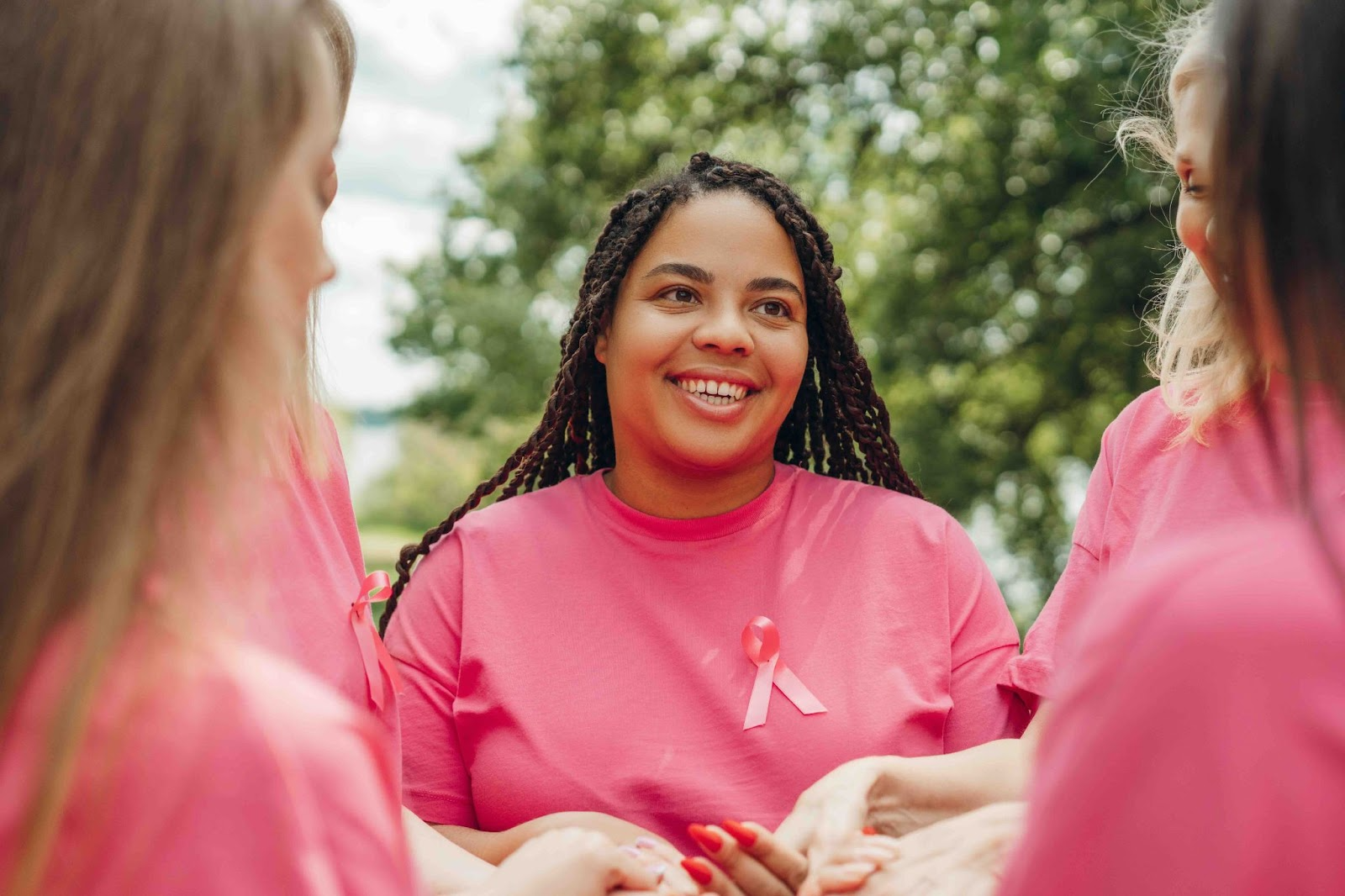Breast Cancer Awareness Month: Facts, Signs, and Early Detection

Each October, Breast Cancer Awareness Month shines a light on one of the most pressing health issues affecting millions of people worldwide. Beyond the pink ribbons and fundraising walks lies a serious effort to educate the public, promote breast cancer awareness, and emphasize the importance of early screening. Breast cancer remains one of the most commonly diagnosed cancers, and awareness campaigns play a key role in improving outcomes.
What is Breast Cancer Awareness Month?
Breast Cancer Awareness Month began in 1985 as a collaboration between the American Cancer Society and a pharmaceutical division of Imperial Chemical Industries. The goal was to promote mammography as the most effective weapon in the fight against breast cancer. Since then, it has grown into a global movement.
The pink ribbon has become the universal symbol of hope and solidarity for survivors and families. Throughout October, organizations, hospitals, and communities organize events such as walks, fundraising galas, and educational seminars to remind everyone of the importance of early detection of breast cancer.
Key Breast Cancer Facts
According to the National Breast Cancer Foundation (NBCF), one in eight women in the United States will be diagnosed with breast cancer in her lifetime. In 2025, it’s estimated that over 310,000 new cases of invasive breast cancer will be diagnosed in women in the U.S. alone. Men are also affected, though at a much lower rate, with about 2,800 cases annually.
Early detection significantly improves survival rates. The five-year relative survival rate for localized breast cancer (cancer that has not spread outside the breast) is 99%. However, survival drops when diagnosis occurs at later stages, highlighting the importance of education and awareness.
Some common myths still persist. For example, many believe that only those with a family history are at risk, but the majority of cases occur in people with no family history. Awareness and proactive screening remain critical. Another misconception is that breast cancer always presents as a lump, yet symptoms can take many different forms.
Types of Breast Cancer
There are several types of breast cancer, each with unique characteristics and treatment approaches:
- Invasive ductal carcinoma (IDC): The most common type, accounting for about 80% of diagnoses. It begins in the milk ducts and spreads to the surrounding tissue. IDC can vary in size and aggressiveness, making treatment highly individualized.
- Invasive lobular carcinoma (ILC): Starts in the milk-producing lobules and can be more difficult to detect on imaging. ILC often spreads in a single-file pattern, which can make it harder to feel as a lump during self-exams.
- Triple-negative breast cancer: Lacks estrogen, progesterone, and HER2 receptors, making it more challenging to treat. This type is more common in younger women and tends to grow and spread more quickly than other forms.
- HER2-positive breast cancer: A more aggressive type caused by overproduction of the HER2 protein. Targeted therapies have significantly improved outcomes for patients with HER2-positive breast cancer in recent years.
- Inflammatory breast cancer: Rare but aggressive, often presenting with redness and swelling rather than a lump. It accounts for only 1–5% of cases but progresses more rapidly than other types.
- Ductal carcinoma in situ (DCIS): A non-invasive cancer where abnormal cells remain within the milk ducts. While not life-threatening on its own, DCIS can increase the risk of developing invasive breast cancer later.
Signs of Breast Cancer & Symptoms to Watch For
Recognizing the signs of breast cancer can lead to earlier diagnosis and treatment. The most common symptom is a lump in the breast or underarm. Other warning signs include changes in breast size or shape, skin dimpling, nipple discharge, or pain.
There are also less common signs of breast cancer that people often overlook, such as itching, warmth, or redness in the breast, which could indicate inflammatory breast cancer. Some people may also notice swelling around the collarbone or armpit, persistent fatigue, or unexplained weight loss. Because symptoms vary and sometimes mimic other conditions, professional evaluation is essential.
Breast Cancer Screening & Early Detection
Breast cancer screening remains the strongest tool for saving lives. Mammograms can detect tumors before they can be felt, often years earlier. The NBCF emphasizes that early detection of breast cancer increases treatment options and survival rates.
Guidelines vary, but many experts recommend annual mammograms starting at age 40. Those with a higher risk, such as a family history or genetic mutations (like BRCA1 or BRCA2), may need to start earlier.
Other screening methods include clinical breast exams by healthcare providers and self-exams, which help individuals become familiar with their own breast tissue. Advances in technology, including 3D mammography and genetic testing, are improving detection rates and accuracy.
Breast Cancer Risk Factors
Several factors can increase the likelihood of developing breast cancer. Some, like age, gender, and genetics, cannot be controlled. Women over 50 and those with inherited genetic mutations face higher risks, and family history can amplify that risk.
Lifestyle factors also play a role. Lack of physical activity, poor diet, alcohol use, and obesity are linked to increased risk. Hormone replacement therapy after menopause has also been associated with higher rates. Long-term stress and environmental exposures, while less direct, may also contribute.
Family history significantly influences risk, but as noted, most people diagnosed with the condition have no direct family history. Prevention strategies such as maintaining a healthy weight, exercising regularly, limiting alcohol, and not smoking can help reduce risk. Proactive steps like genetic counseling and risk-reducing medication may also be recommended for high-risk individuals.
Breast Cancer Treatment Options
Once diagnosed, breast cancer treatment depends on the type and stage of the disease. Common options include:
- Surgery: Lumpectomy removes the tumor while conserving the breast, while mastectomy involves removing the entire breast. In some cases, reconstructive surgery is also performed, helping restore body image and confidence.
- Radiation therapy: Utilizes high-energy rays to target and destroy cancer cells, thereby reducing the likelihood of recurrence. It is often recommended after surgery to ensure any remaining cancer cells are eliminated.
- Chemotherapy: Medications that destroy rapidly dividing cells, often used before or after surgery. Side effects can be challenging, but supportive treatments have improved the experience for many patients.
- Hormonal therapy: Helps block hormones that fuel certain cancers, such as estrogen-positive tumors. These treatments can last for years after initial therapy to lower the risk of recurrence.
- Targeted and immunotherapy treatments: These newer approaches attack cancer cells while sparing healthy tissue, often with fewer side effects. They represent some of the most promising areas of current cancer research.
Emerging advancements, such as personalized medicine and genetically based therapies, continue to improve outcomes and reduce side effects. Clinical trials are also expanding options for patients with advanced or resistant disease.
Living Beyond Breast Cancer
Survivorship brings its own challenges and triumphs. Many survivors face ongoing health monitoring, reconstruction decisions, and emotional hurdles. Support groups, counseling, and survivorship programs provide connection and guidance.
Mental health is an often-overlooked aspect of recovery. Anxiety, fear of recurrence, and depression can persist after treatment ends. Community resources such as the NBCF, local support groups, and counseling services help survivors and families navigate this stage.
Why Awareness Month Matters
The significance of Breast Cancer Awareness Month goes far beyond the pink ribbon; it represents a collective effort to educate, advocate, and improve outcomes for everyone impacted by the disease. When communities come together to fund research, promote education, and support those affected, real change happens.
Awareness campaigns ensure that lifesaving information reaches people who may not otherwise have access to it. For many, hearing about breast cancer awareness for the first time in October becomes the spark that leads them to schedule a mammogram or encourage a loved one to get screened. This ripple effect can lead to earlier diagnoses and improved survival rates across entire populations.
The month also provides a platform for survivors to share their stories, breaking down stigmas and reminding others that they are not alone. These personal narratives inspire hope and encourage more open conversations about breast health. For families who have lost loved ones, awareness month is a chance to honor their memory and continue advocating for progress.
On a larger scale, fundraising tied to awareness events fuels research into new treatments and technologies. Every walk, gala, or campaign contributes to advancements in early detection, improved therapies, and, ultimately, the pursuit of a cure. Without these collective efforts, many scientific breakthroughs would not be possible.
Employers, schools, and community groups often use October as a time to educate, making breast health a visible and important part of public life. From health fairs to social media challenges, these initiatives keep the conversation active and normalize discussions about screenings and symptoms.
Individuals can get involved by participating in awareness walks or events, donating to organizations, wearing pink, or simply sharing educational resources with family and friends. The most powerful action, however, is encouraging loved ones to stay on top of breast cancer screening and early detection. By turning awareness into action, the impact of this month extends far beyond October, creating healthier futures year-round.

Frequently Asked Questions About Breast Cancer Awareness Month
What is the purpose of Breast Cancer Awareness Month?
Educating the public, raising funds for research, and supporting those affected are the main goals of Breast Cancer Awareness Month.
What are the first signs of breast cancer?
Common early symptoms include lumps in the breast, changes in shape or size, nipple discharge, or skin dimpling. Less common signs include redness, itching, or warmth in the breast.
When should I start breast cancer screening?
Most experts recommend beginning regular mammograms between ages 40–50, depending on personal and family risk factors. High-risk individuals may need to start earlier.
Can breast cancer be cured if caught early?
Yes. Many cases are highly treatable when detected early, and survival rates are significantly higher for localized breast cancer.
How can I support breast cancer awareness?
Participating in fundraising events, wearing pink, donating, and encouraging family and friends to schedule screenings are powerful ways to support breast cancer awareness.

Get Started Now
Enjoy full access to everything Caily offers, from medication tracking to shared schedules and daily check-ins. See how much easier caregiving can be when everything is coordinated in one place.
Start your free trial
